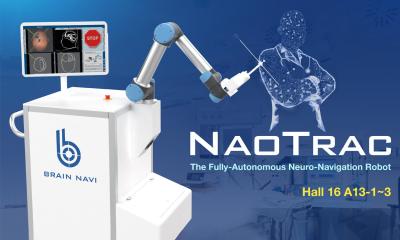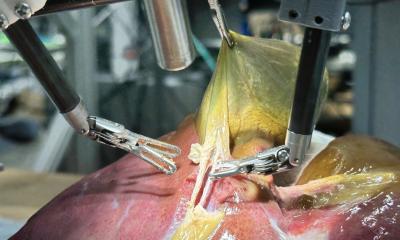News • Increased operating time
Robot-assisted surgery not always faster
Robot-assisted laparoscopic surgery to remove a patient’s entire kidney requires slightly longer operating times and results in increased costs compared with the use of traditional laparoscopic surgery, according to a large, multiyear analysis conducted by researchers at the Stanford University School of Medicine. However, the two approaches have comparable patient outcomes and lengths of hospital stay, the study showed.
“Although the laparoscopic procedure has been standard of care for a radical nephrectomy for many years, we saw an increase in the use of robotic-assisted approaches, and by 2015 these had surpassed the number of conventional laparoscopic procedures,” said Benjamin Chung, MD, associate professor of urology. “We found that, although there was no statistical difference in outcome or length of hospital stay, the robotic-assisted surgeries cost more and had a higher probability of prolonged operative time.”
The discrepancy may be due to the time needed for robotic operating room setup or due to a surgeon being in the earlier part of his or her learning curve, resulting in a subsequent increase in operating room and instrumentation costs, the researchers speculated. Chung is the senior author of the study, which was published Oct. 24 in JAMA. The lead author is former Stanford visiting scholar In Gab Jeong, MD, PhD.
The dexterity of robots
Surgical robots are helpful because they offer more dexterity than traditional laparoscopic instrumentation and use a three-dimensional, high-resolution camera to visualize and magnify the operating field. Some procedures, such as the removal of the prostate or the removal of just a portion of the kidney, require a high degree of delicate maneuvering and extensive internal suturing that render the robot’s assistance invaluable. But Chung and his colleagues wondered whether less technically challenging surgeries, such as the removal of a whole kidney, may not benefit as significantly from a robot’s help.
The researchers analyzed data from 416 hospitals across the country from 2003 to 2015. They found that in 2003 about 65 percent of patients with kidney tumors that necessitated the removal of the entire organ underwent an open surgical procedure. About 34 percent had their kidney removed using a laparoscopic procedure, and only the remaining 1.5 percent of cases were conducted with robot-assisted surgery. By 2015, the proportion of patients who underwent the open procedure had decreased to about 50 percent, but the use of robot-assisted laparoscopic surgery for the remaining cases had surpassed that of traditional laparoscopic surgery, 27 percent to 23 percent.
When they pooled the data across the years, the researchers found that among nearly 24,000 patients, almost 19,000 underwent a traditional laparoscopic procedure and about 5,000 underwent a robotic-assisted procedure. They found that 46.3 percent of those patients whose surgeon used the robot had a total procedure time of more than four hours. In contrast, about 28.5 percent of the patients whose surgeon used the conventional laparoscopic procedure were in the operating room for more than four hours.
On average, the total hospital cost (including the cost of supplies, room and board, pharmaceuticals and operating room time) for the robot-assisted procedure exceeded that of the traditional laparoscopic procedures by about $2,700 per patient. The researchers speculated that the increased cost may be due to longer times spent in the operating room and the disposable instruments upon which surgical robots rely.
Why use robotic assistance?
The increase in robot-assisted surgery for many procedures may be due to a variety of factors, the researchers said. The technology clearly benefits patients for certain types of surgeries. In other situations, there may be an expectation on the part of the hospital or the surgeons themselves to justify the large initial investment in purchasing the robot by using it for many types of procedures. And, regardless of the procedure, use of the robotic platform can assist the surgeon in many ways to make the operation more comfortable for the surgeon. Finally, patients themselves may view robot-assisted surgery as more technologically advanced.
Chung noted that the study covers a time period when many physicians were just learning to use the robots for this type of procedure; as time passes, it’s possible the operating time will decrease and that the cost differences between the two procedures will narrow. But for now, the study suggests that robot-assisted surgery isn’t always the right choice. “There is a certain incentive to use very expensive equipment,” said Chung. “But it is also important to be cognizant as to how our health care dollars are being spent. Although robotic surgery has some advantages, are those advantages relevant enough in this type of case to justify an increase in cost?”
Source: Stanford Medicine
31.10.2017











